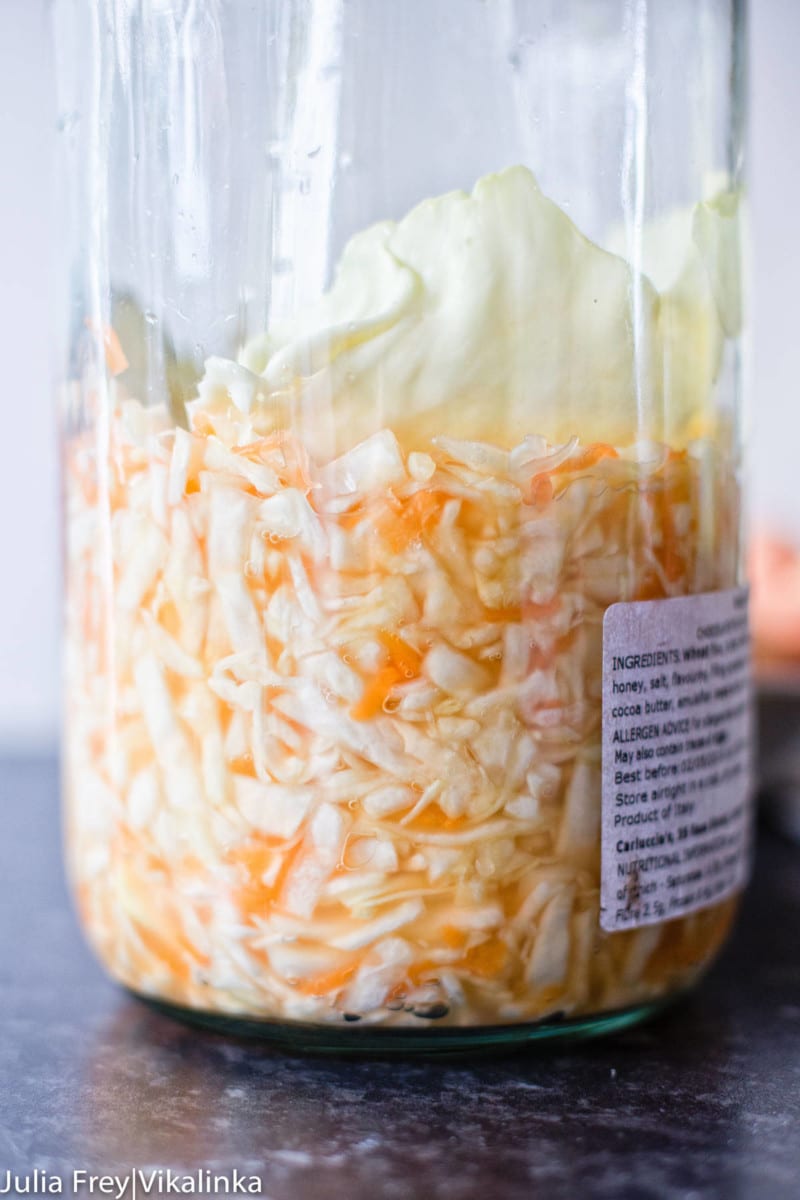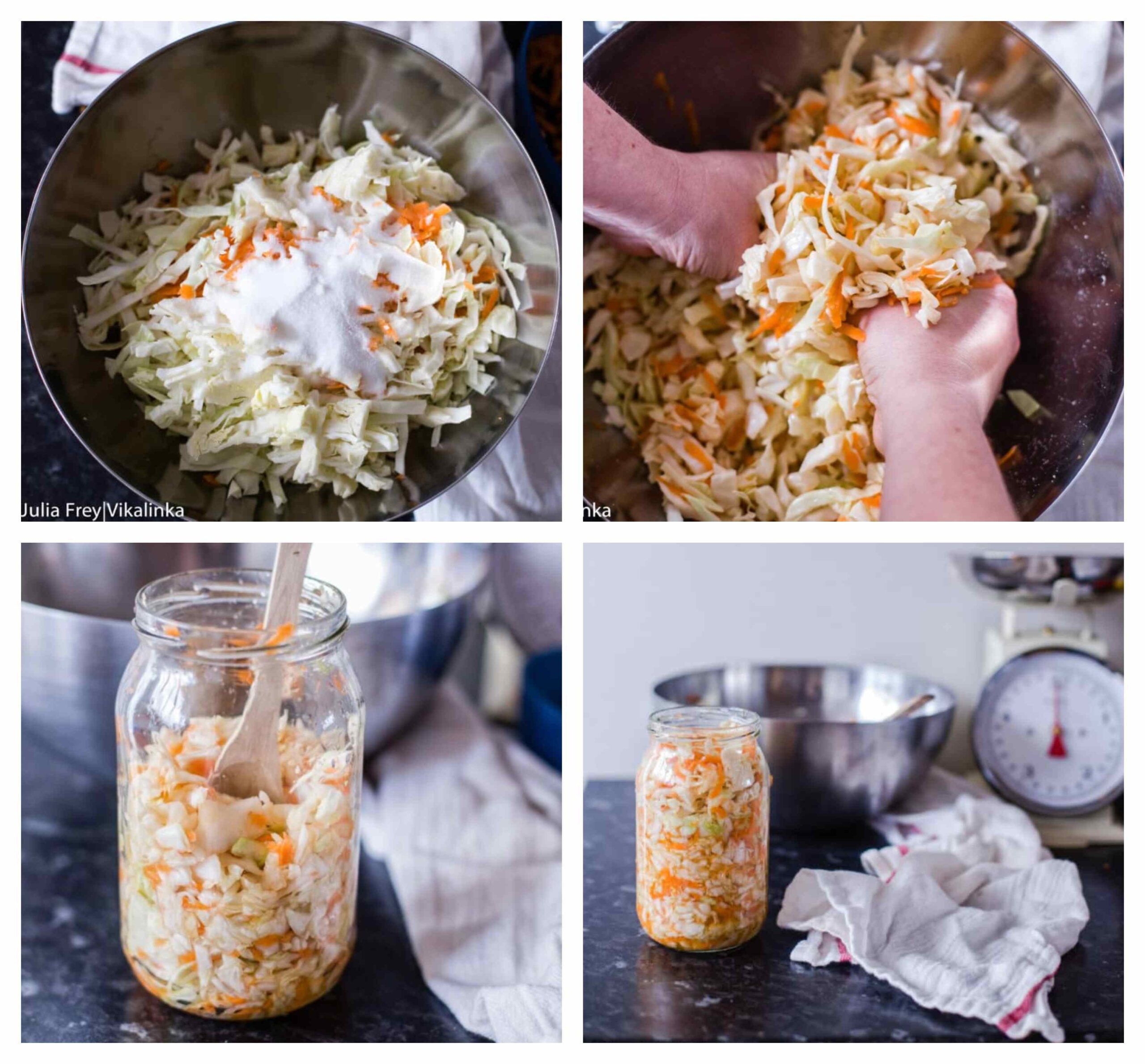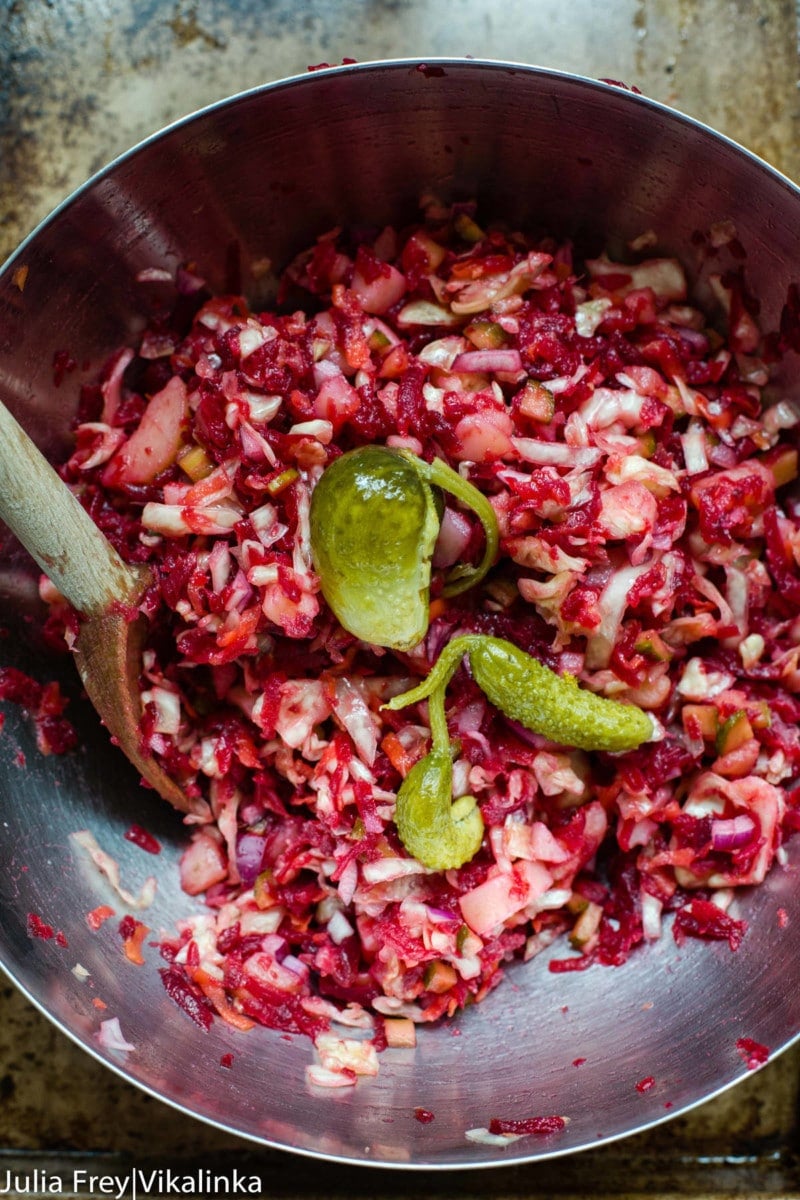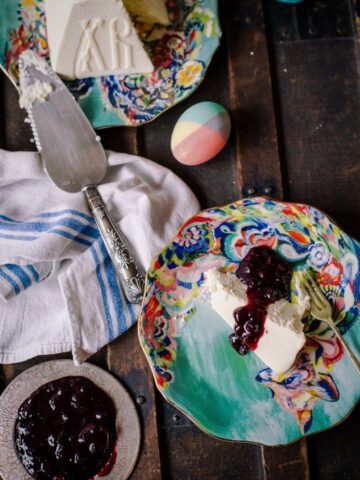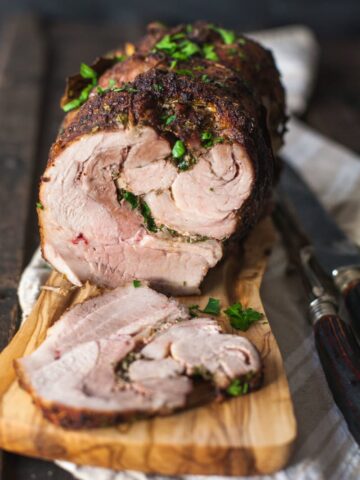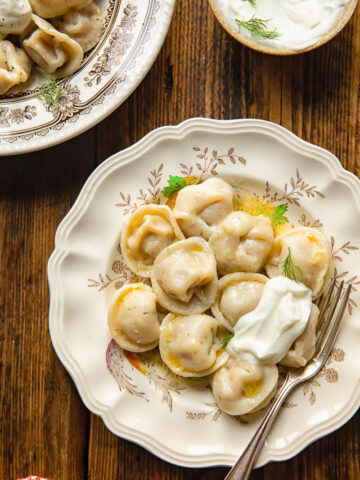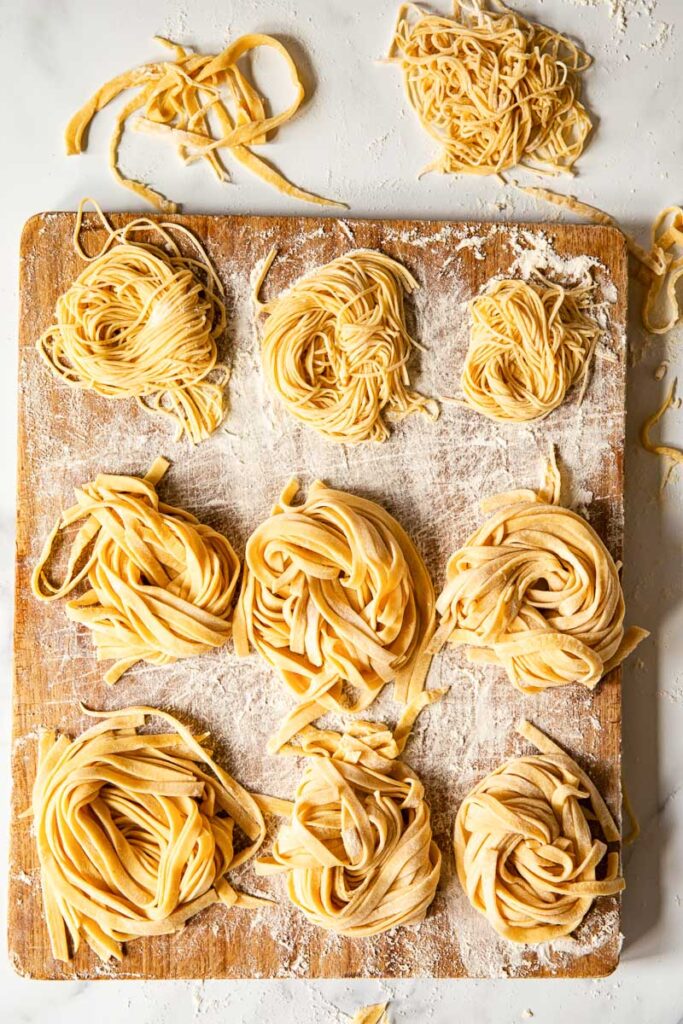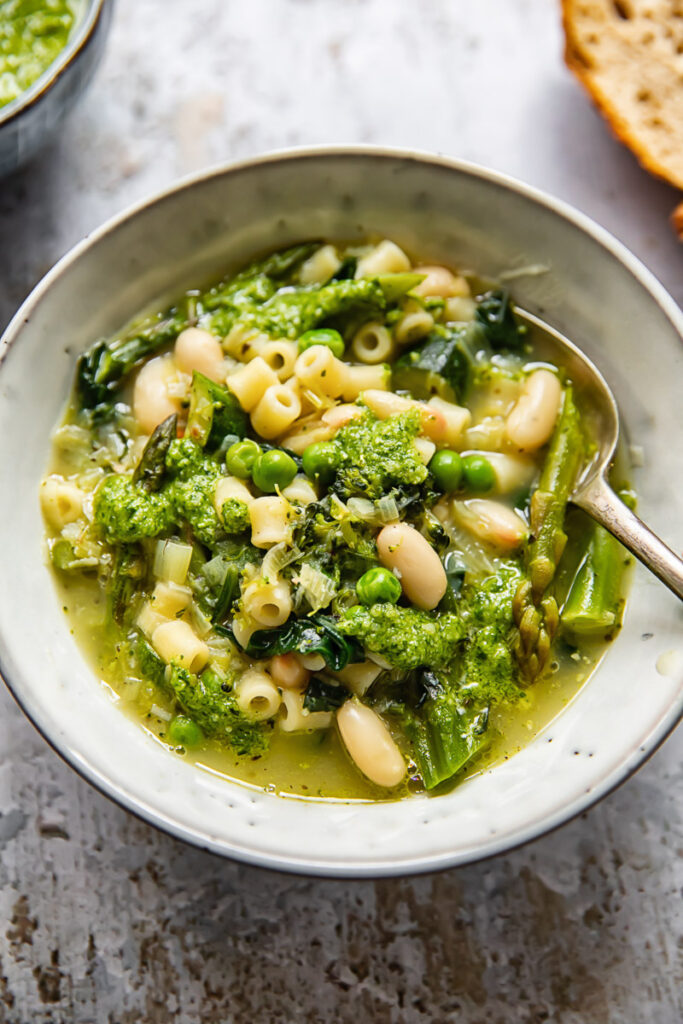An easy, tried and true recipe for homemade sauerkraut. The perfect way to turn humble cabbage into something truly special!
This recipe is a base for crisp and flavourful Beet Sauerkraut Salad!
The world has a lot of amazing, interesting food in it. The diversity of cuisine you can find around the world is nothing short of stunning.
But as much as I love trying all sorts of new and exciting flavours, I will never lose my love for the food I grew up with.
This Russian sauerkraut recipe was one of the first things I made when I got married and finally had a kitchen of my own. I was really nervous making my first batch!
Sauerkraut making was the territory where only all-knowing babushkas went, and I wasn’t sure I could make it as good as they did. It turned out that the recipe was as easy as boiling an egg and the result was just as delicious!
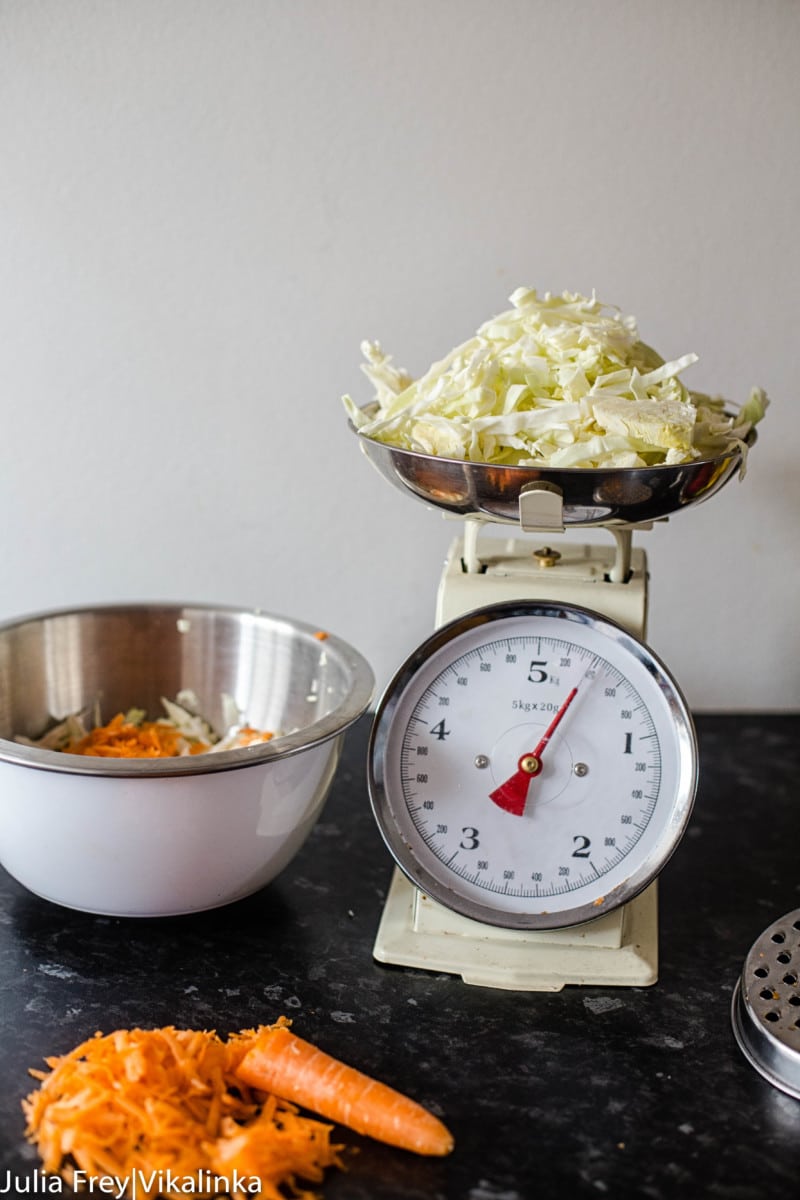
What is Sauerkraut?
I call this recipe Russian sauerkraut for the lack of a better word. Sauerkraut is the word an English speaking audience would be familiar with. However, with the recent rising interest in fermentation a lot more people are experimenting with soured foods.
Essentially ‘kvashenaya kapusta’ is cabbage and carrots fermented in naturally occurred lactobacillus, the same bacteria found in yogurt and other cultured products.
How to eat it
Sauerkraut is something much of Eastern Europe has enjoyed for centuries. It is eaten cold on it’s own or in a salad or could be added to hot food such as this beef and cabbage soup “shchi”. It is delicious and contains gut-healthy bacteria as well as insane amount of vitamin C.
Sauerkraut can be added to sandwiches, the famous Reuben sandwich comes to mind or alongside meat like sausage. Kielbasa and Sauerkraut is a favourite of my family!
I haven’t made sauerkraut for years but decided to bring it back into our diet in attempts to lead a healthier lifestyle. Even though I did it for the health reasons as soon as I had the first spoonful I remembered just how much I loved the taste!
Once I made it I couldn’t stop making it!! I hope this will be your experience as well!!
More Flavour Options
It’s difficult to describe traditional sauerkraut because there are so many variations. Everyone’s grandma makes it a little differently, and the recipe here is how mine did it.
A favourite way of adding variety to sauerkraut is to add spices. The range of options is huge but some traditional ones are:
- caraway seeds
- juniper berries
- celery root
- dill seeds
More Eastern European Recipes
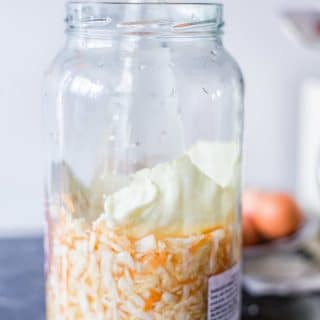
Homemade Russian Sauerkraut
Ingredients
- 2.5 lbs/ 1 small head of white cabbage sliced
- 2 carrots grated
- 1.5 tbsp. salt
- 1 tsp sugar
Instructions
- Wash the cabbage and peel carrots. Remove a large outer leaf and set aside. Cut the cabbage in half and then in quarters, remove the core and tough outer ribs with a sharp knife, then slice the cabbage in approximately ¼″ thin slices and grate the carrots.
- In a large mixing bowl combine the cabbage, carrots, salt and sugar, then start mixing ingredients with your hands while massaging them to soften the cabbage and allow it to release its juices for 2-3 minutes.
- Pack the cabbage and carrots tightly in a sterelised jar, use a long-handled wooden spoon to pack your cabbage and to release more juice. When your jar is full the liquid should cover the cabbage completely, which will preserve it from harmful bacteria. Cover the surface with a reserved cabbage leaf and weigh it down with a water-filled jar, then cover with a layer of cheesecloth. Leave your sauerkraut out to ferment for approximately 3 days. It might take longer if your house is cold. Each day pierce it with the handle of a wooden spoon to release gas, then cover it back up with a cheesecloth.
- Refrigerate the sauerkraut after the fermentation process is done.


